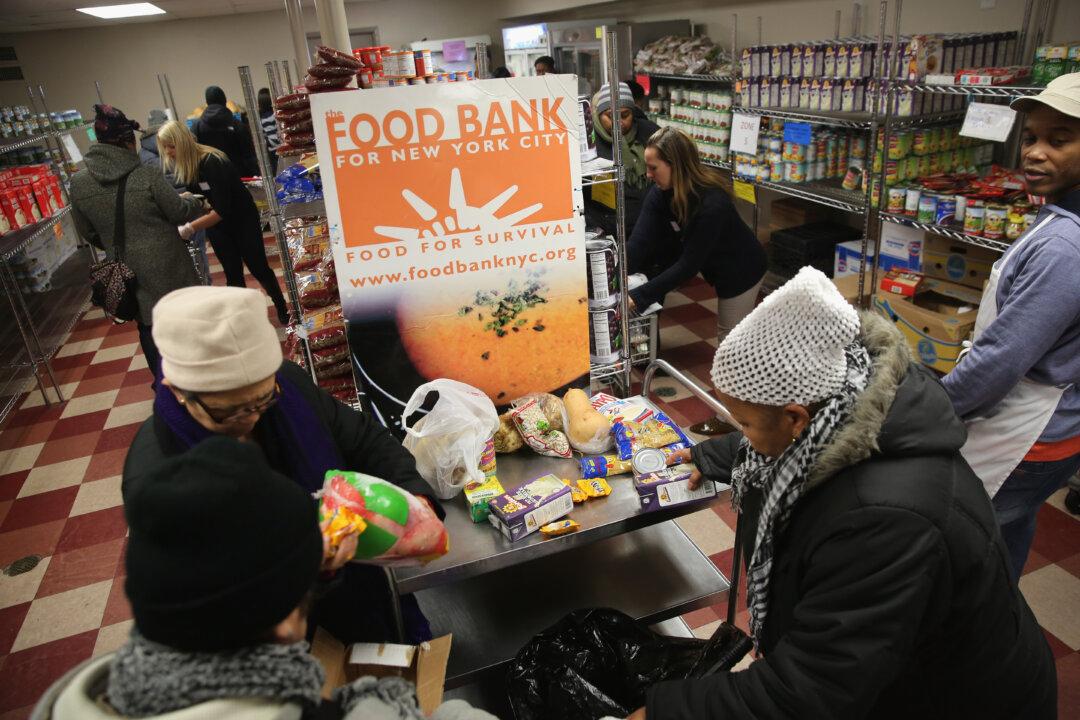Food Banks Running Low in NYC
NEW YORK—More than one in four New Yorkers (2.6 million) go hungry because they cannot afford to buy food, according to the nonprofit Food Bank For New York City.

Harlem residents choose free groceries at the Food Bank For New York City on Dec. 11, 2013. John Moore/Getty Images
|Updated:
Annie Wu joined the full-time staff at the Epoch Times in July 2014. That year, she won a first-place award from the New York Press Association for best spot news coverage. She is a graduate of Barnard College and the Columbia University Graduate School of Journalism.
Author’s Selected Articles




